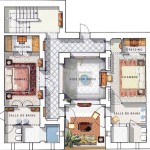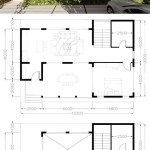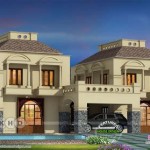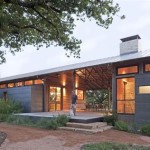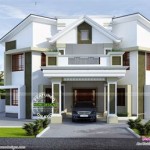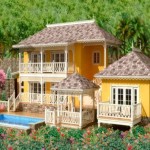Home Plans With Inlaw Apartments
Multigenerational living is becoming increasingly common, leading to a surge in demand for homes that accommodate extended families. A popular solution is incorporating an inlaw apartment, sometimes referred to as a secondary suite or accessory dwelling unit (ADU), into the main house plan. These self-contained living spaces offer privacy and independence for family members while remaining conveniently close.
Inlaw apartments offer a range of benefits for both the homeowner and the residing family member. For homeowners, the presence of an inlaw suite can increase property value and provide flexibility for future needs. It can serve as a space for aging parents, returning adult children, or even as a rental unit for supplemental income. For the inlaw, the apartment offers a sense of independence and privacy while still allowing for close proximity to family and support when needed.
The design and features of an inlaw apartment can vary significantly based on the needs of the occupants and the available space. Some common features include a separate entrance, a small kitchen, a living area, a bedroom, and a bathroom. Accessibility features such as grab bars, wider doorways, and a walk-in shower can be incorporated to accommodate individuals with mobility limitations. The apartment's size can range from a compact studio to a more spacious one or two-bedroom unit.
When considering incorporating an inlaw apartment into a home plan, careful consideration should be given to its location within the house. Options include a separate wing connected to the main house, a converted basement or attic space, or a detached structure on the property. Connecting the apartment directly to the main house offers convenience and ease of access, while a detached unit provides greater privacy and independence.
Privacy is a key consideration in designing inlaw apartments. Separate entrances and soundproofing measures can help maintain a sense of autonomy for both households. The layout should also be designed to minimize shared hallways or common areas, allowing for independent living. Outdoor spaces, such as a private patio or garden area, can further enhance the sense of privacy and provide a dedicated area for relaxation.
Building codes and regulations regarding inlaw apartments vary by location. Before beginning construction, it's crucial to consult with local authorities to ensure compliance with zoning laws, building permits, and safety regulations. These regulations often address issues such as minimum size requirements, fire safety standards, and accessibility guidelines.
The cost of building an inlaw apartment can vary significantly depending on factors such as size, finishes, and location. Converting an existing space, such as a basement or attic, is generally less expensive than building a new addition. However, even conversions may require significant renovations to meet building codes and ensure functionality. It's essential to establish a realistic budget and explore financing options before commencing the project.
Several different home plan styles can accommodate inlaw apartments. Ranch-style homes often offer ample space for incorporating an inlaw suite on the main level, minimizing the need for stairs. Two-story homes can accommodate inlaw apartments on the ground floor or in a finished basement. Cape Cod-style homes can utilize the often-unfinished second-story space for a private inlaw apartment.
When choosing a home plan with an inlaw apartment, it's essential to consider the long-term needs of the family. Flexibility and adaptability are key factors. A design that can easily be modified to accommodate changing needs, such as converting the apartment into a home office or guest suite, can add value and longevity to the home.
Working with an experienced architect or home designer is highly recommended when planning an inlaw apartment. They can provide expert advice on design, layout, and material selection, ensuring that the space is functional, aesthetically pleasing, and meets all building codes and regulations. They can also help navigate the permitting process and oversee the construction phase.
Careful planning and consideration are essential when designing and building an inlaw apartment. By addressing factors such as privacy, accessibility, and local regulations, homeowners can create a functional and comfortable living space that benefits both the inlaw and the extended family.
Considering the growing trend of multigenerational living, incorporating an inlaw suite can be a valuable investment that enhances both the functionality and value of a home. It provides a flexible and adaptable solution for accommodating extended family members while maintaining their independence and privacy.
From maximizing space utilization to ensuring compliance with regulations, meticulous planning is crucial for the successful integration of an inlaw apartment. By addressing the specific needs and preferences of the occupants, homeowners can create a harmonious and functional living environment for all members of the extended family.

Southern Style House Plan With In Law Suite

House Plan 65862 Tuscan Style With 2091 Sq Ft 3 Bed 2 Bath 1

Rising Trend For In Law Apartments Brick House Plans Bungalow Modular Home Floor

In Law Suite Plans Give Mom Space And Keep Yours The House Designers

House Plans With In Law Suites Houseplans Blog Com

Modern Farmhouse Plan With In Law Suite 70607mk Architectural Designs House Plans

Front Side View House Plans With A Separate In Law Suite

Country Home Plan 4 Bedrms 3 Baths 2464 Sq Ft 146 2173 Style House Plans Southern Multigenerational

6 Bedroom French Country House Plan With In Law Suite Coolhouseplans Blog

5 Bedroom Ranch House Plan With In Law Suite 2875 Sq Ft

